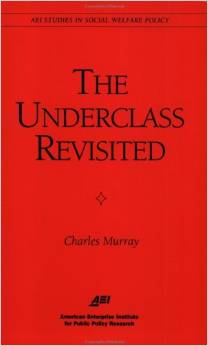(Washington: AEI Press, 1999.)
Excerpt:
No one talks much about the underclass anymore, and apparently for good reason. The welfare rolls are plunging. Crime has been falling for several years. The labor market is so tight that employers are searching out even the lowest-skilled workers in the inner city, offering them free transportation to where the jobs are. The teenage birth rate is down. What’s left to worry about?
Everything there was to worry about before. People who track the data about the underclass are like a physician with an overweight, chain-smoking executive who has gone on a diet and lost three pounds, cut down to five cigarettes a day, and taken a daily walk for two weeks. The patient feels great. He thinks everything has turned around. Meanwhile, the physician knows that nothing has really changed yet.
Nothing has really changed yet with the American underclass; that is the thesis to which most of this article is devoted. Why then has the underclass disappeared so completely from the national radar screen? I think the answer is simple and ignoble. What needs to be done? Maybe nothing. Maybe more than we can bear to contemplate.

